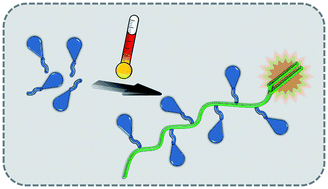High temperature synthesis of vinyl terminated polymers based on dendronized acrylates: a detailed product analysis study†
Abstract
The combination of dendrons and high temperature

* Corresponding authors
a
Preparative Macromolecular Chemistry, Institut für Technische Chemie und Polymerchemie, Karlsruhe Institute of Technology (KIT), Engesserstr. 18, Karlsruhe, Germany
E-mail:
christopher.barner-kowollik@kit.edu
Web: www.macroarc.de
Tel: +49 721 608 45641
b
Fiber and Polymer Technology, School of Chemical Science and Engineering, Royal Institute of Technology, Teknikringen 56-58, Stockholm, Sweden
E-mail:
malkoch@kth.se
Tel: +46 8 790 8768
The combination of dendrons and high temperature

 Please wait while we load your content...
Something went wrong. Try again?
Please wait while we load your content...
Something went wrong. Try again?
A. Zorn, M. Malkoch, A. Carlmark and C. Barner-Kowollik, Polym. Chem., 2011, 2, 1163 DOI: 10.1039/C0PY00411A
To request permission to reproduce material from this article, please go to the Copyright Clearance Center request page.
If you are an author contributing to an RSC publication, you do not need to request permission provided correct acknowledgement is given.
If you are the author of this article, you do not need to request permission to reproduce figures and diagrams provided correct acknowledgement is given. If you want to reproduce the whole article in a third-party publication (excluding your thesis/dissertation for which permission is not required) please go to the Copyright Clearance Center request page.
Read more about how to correctly acknowledge RSC content.
 Fetching data from CrossRef.
Fetching data from CrossRef.
This may take some time to load.
Loading related content
